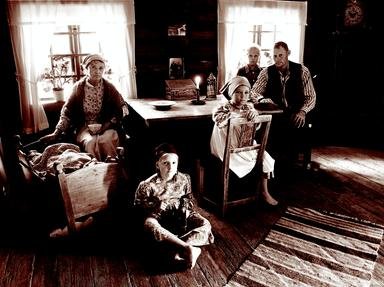Quiz Answer Key and Fun Facts
1. Every well-dressed middle-class American man needed a top hat. Early in the nineteenth century, most top hats--and other styles too--were made of felt, formed from the fur of this abundant native animal. But by the 1830s, the over-trapped animal was no longer abundant, and hatters scrambled to find alternatives, generally settling on silk. What was this animal, almost driven to extinction by fashion?
2. It was used for heating and cooking, fueling railroads and steamboats, as well as building homes, fences, bridges, railroad tracks and even roads. Iron furnaces needed it to smelt ore, and blacksmiths used it for their forges. So when Americans looked out over the new prairies and deserts of the west and saw there was far less of it on the land they would be settling, compared to the land already settled, they realized a shortage was coming, if they couldn't find alternatives. What was this all-purpose material?
3. During the Civil War, the Federal blockade of southern ports created many wartime shortages of both luxuries, like silk, and necessities, like medicines. Southern military doctors advertised in the newspapers to purchase local herbs, as a substitute for foreign medicines. Dogwood bark was one of the things they wanted, to replace South American cinchona bark. What was it primarily used to treat?
4. This bird once outnumbered any other species of bird in North America, and was easy to hunt and good to eat. Though some people in the mid nineteenth century noticed its numbers and range were declining, others argued that it was as prolific and abundant as ever. By the time the two sides agreed there was a problem, the highly social bird no longer had flocks big enough to encourage breeding, and it became extinct in the twentieth century as the last few specimens died without offspring. What was this bird?
5. At the start of the Civil War, people began hoarding coins because the metal in them became worth more than the face value. Stores scrambled for ways to give change by offering their own private tokens, while people turned to paper stamps for small payments, but stamps in a pocket or purse became a sticky mess when carried in humid weather. In 1862, what did the U.S. Treasury offer as a solution for the coin hoarding problem?
6. In 1872, horses were suddenly in drastically short supply across the U.S. Photos and drawings show crowds of men in harness, hitched to city horse cars, trying to substitute for the missing animals. Fire engines couldn't get to fires without horses to pull them, and even steam trains suffered, as there were no horses to transport coal to the tracks.
Within months the crisis passed, but economic problems lingered longer. Why were horses suddenly unavailable?
7. In 1861, both sides had no problem finding military volunteers for the Civil War. But as the war ground on, enthusiasm faded and volunteers were in short supply. Both sides used a carrot-and-stick approach to fill the ranks, drafting reluctant soldiers but also rewarding volunteers with bounties. What were bounties?
8. The price of this commodity was soaring in the deep south in the 1850s. Some politicians suggested a flood of cheap imports from Africa would lower the price, but importation from that continent had been illegal for decades. Other Southern politicians, whose constituents produced the commodity, liked the high prices, and they opposed any loosening of the restrictions on importation. Others didn't want the laws changed on general principle. In the end, no importation was allowed and prices continued to rise until the Civil War.
What was this commodity that the Deep South wanted a cheaper, more abundant supply of?
9. In the 1850s, whales became scarcer as they were over-hunted for their valuable products: oil and spermaceti for light and lubrication, as well as whalebone that stiffened corsets. People already knew that petroleum from the ground could be used to substitute for increasingly expensive whale oil, though refining out the bad odor was an ongoing problem. But not much was available. Just as whales became scarcer in the late 1850s, petroleum suddenly became more abundant. What made it more available?
10. After being farmed for decades, sometimes centuries, the once-fertile soil of the East Coast was running out of nutrients. Some farmers gave up and moved westward to fresh land, but others recognized that fertility could be restored by adding lime, manure, gypsum, marl or other substances. One of the best substances for increasing crop yields was guano from islands off the coast of Peru. The American Guano Company, formed in 1855, and its competitors harvested and shipped thousands of tons to the US. What was guano?
Source: Author
littlepup
This quiz was reviewed by FunTrivia editor
bloomsby before going online.
Any errors found in FunTrivia content are routinely corrected through our feedback system.

